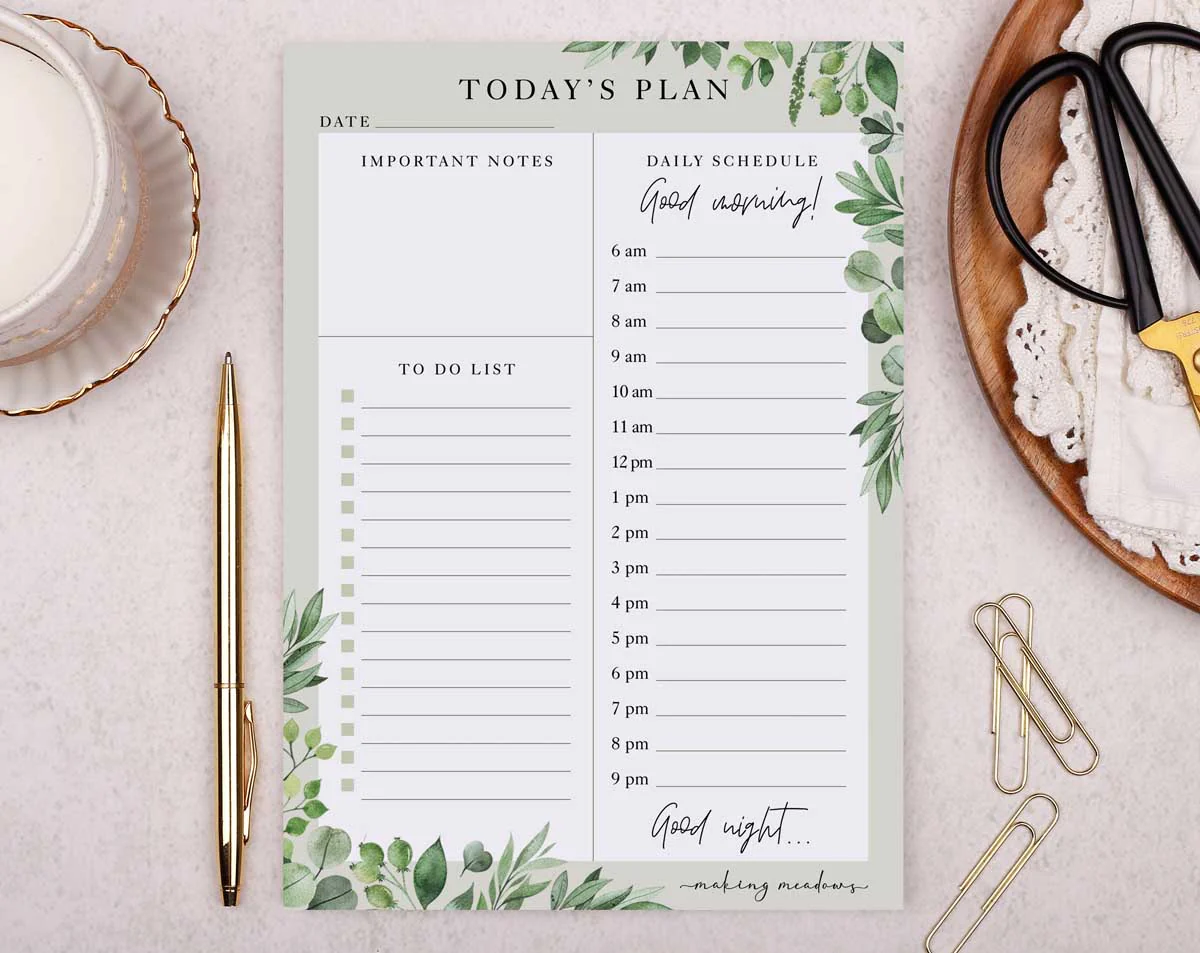
The Ultimate Guide to Maximizing Productivity with a Daily Planner
In today’s fast-paced world, staying organized and managing our time effectively can feel like an uphill battle. With endless to-do lists, appointments, and responsibilities vying for our attention, it’s easy to feel overwhelmed and lost in the chaos. But fear not, for there is a simple yet powerful tool that can help you regain control of your days and supercharge your productivity: the daily planner.
A daily planner is more than just a notebook; it’s a strategic tool that empowers you to prioritize tasks, set goals, and structure your day for optimal efficiency. In this comprehensive guide, we’ll explore the myriad benefits of using a daily planner and provide practical tips to help you harness its full potential.
Understanding the Power of a Daily Planner
Before we delve into the specifics of how to use a daily planner effectively, let’s take a moment to understand why it’s such a valuable tool for boosting productivity:
1. Organization and Structure
At its core, a daily planner provides a framework for organizing your tasks and commitments. By mapping out your day in advance, you can allocate time for important activities, set realistic goals, and ensure that nothing falls through the cracks. This structure helps to reduce overwhelm and allows you to approach each day with clarity and purpose.
2. Time Management
Effective time management is essential for achieving your goals and maximizing productivity. A daily planner enables you to prioritize tasks, estimate how long each task will take, and schedule your time accordingly. By managing your time more efficiently, you can make the most of your available hours and accomplish more in less time.
3. Goal Setting and Progress Tracking
A daily planner serves as a roadmap for your goals, both short-term and long-term. By setting specific, measurable, achievable, relevant, and time-bound (SMART) goals, you can break down larger objectives into smaller, actionable steps. As you complete tasks and make progress toward your goals, you can track your achievements in your planner, providing a sense of accomplishment and motivation.
4. Increased Focus and Productivity
With a daily planner, you have a clear plan of action for each day, which helps to eliminate distractions and stay focused on what matters most. By following your schedule and sticking to your priorities, you can avoid wasting time on non-essential tasks and maintain a high level of productivity throughout the day.
5. Stress Reduction
One of the most significant benefits of using a daily planner is its ability to reduce stress and overwhelm. By having a structured plan in place, you can approach each day with confidence, knowing exactly what needs to be done and when. This sense of control can help to alleviate anxiety and create a more balanced and harmonious life.
Tips for Using Your Daily Planner Effectively
Now that we’ve explored the benefits of using a daily planner, let’s discuss some practical tips for making the most of this invaluable tool:
1. Choose the Right Planner
There are countless daily planners available on the market, ranging from simple notebooks to sophisticated digital apps. Take the time to find a planner that aligns with your needs, preferences, and lifestyle. Consider factors such as size, layout, format (paper vs. digital), and any additional features or customization options that are important to you.
2. Set Aside Time for Planning
Make it a habit to set aside time each day for planning and organizing your schedule. Whether it’s first thing in the morning or the night before, dedicating time to review your goals, prioritize tasks, and schedule your day will set the tone for a productive and successful day ahead.
3. Prioritize Your Tasks
Not all tasks are created equal. Use your daily planner to identify your top priorities for the day and allocate time for them accordingly. Consider using techniques such as the Eisenhower Matrix or the ABCDE method to categorize tasks based on their importance and urgency, ensuring that you focus your time and energy on the activities that will yield the greatest results.
4. Break Tasks into Manageable Chunks
Large tasks can feel daunting and overwhelming, leading to procrastination and paralysis. Break down larger tasks into smaller, more manageable chunks, and schedule them throughout the day or week. By tackling tasks incrementally, you’ll make progress more consistently and maintain momentum toward your goals.
5. Be Flexible and Adapt as Needed
While planning is essential for productivity, it’s also important to remain flexible and adaptable in the face of unexpected challenges or opportunities. Embrace the idea of “planned spontaneity” by leaving some buffer time in your schedule for unforeseen events or last-minute tasks. Remember that your daily planner is a tool to help you, not a rigid set of rules to be followed blindly.
6. Review and Reflect
At the end of each day, take a few moments to review your planner and reflect on your accomplishments, challenges, and areas for improvement. Celebrate your successes, learn from any setbacks, and use this information to refine your approach for the days ahead. Regular reflection is key to continuous growth and improvement.
In Conclusion
In conclusion, a daily planner is a powerful tool for enhancing productivity, managing your time effectively, and achieving your goals. By providing structure, organization, and clarity, a daily planner empowers you to take control of your days and make the most of your time. Whether you prefer a traditional paper planner or a digital app, the key is to find a system that works for you and commit to using it consistently. With a well-utilized daily planner by your side, you’ll be amazed at what you can accomplish and how much more fulfilling your days can become.



